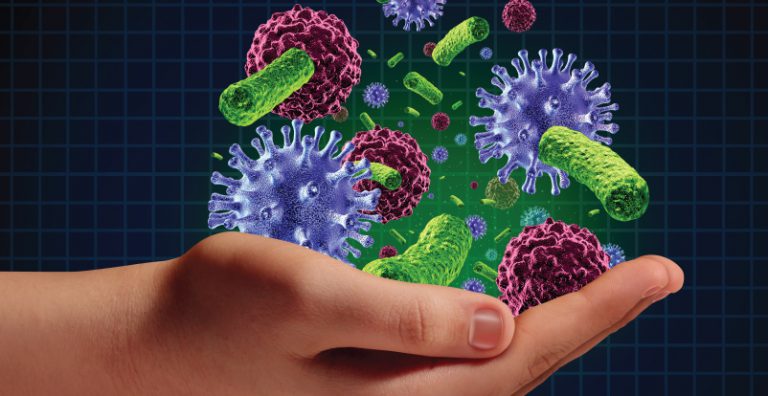Reference: https://extension.wsu.edu/animalag/content/protecting-the-water-on-your-small-farm/
Introduction
Clean water is a valued resource for human and farm animal use, recreation, irrigation, and fish and shell- fish habitat. Pollution of our groundwater (such as wells) and surface water (such as rivers and lakes) is a concern across the United States.
Farmers and the Environment: How to be a Good Steward.”
Sources of Water Pollution
The sources of groundwater and surface water pollution are usually indicated by the terms “point” and “nonpoint.”
Point source pollution comes from a single source such as a pipe or ditch. Non- point pollution is the result of many small pollution sources.
Figure 1 shows many of the interrelationships that occur among soil, manure, crops, and water and how nonpoint pollution occurs.
rain or irrigation than it can hold.
Areas that have been over- grazed, are not covered with grass, and where farm animals loaf can increase the chances of runoff (Figure 2).
Pollution of surface water can occur from both point and nonpoint sources. In most cases, poor groundwater quality occurs when runoff containing dissolved nutrients and pesticides moves through the soil to the groundwater. This process, called leaching, is a natural one.
Point and nonpoint sources of pollution carry many types of pollutants such as pesticides; bacteria from manure or failing sewer systems; and nutrients
from commercial fertilizers, manure, and sewer systems.
Water can be polluted by pesticides; bacteria from manure or failing sewer systems; and nutrients from commercial fertilizers, manure, and sewer systems.
Good Management Practices
Several good management practices have been successful in protecting water quality. Three of these practices are fencing (Figure 3), limited animal access to streams and ponds for drinking water, and buffers along streams and rivers.

Managing Manure to Protect Water Quality
Manure is a good source of the main nutrients needed for plant growth: nitrogen, phosphorus, and potassium (see Small Farms fact sheet titled “The Value of Manure”). In addition, manure can provide organic matter. The organic matter increases the soil’s ability to hold water and helps improve the soil’s quality.
Manure is a good source of the main nutrients needed for plant growth.
The challenge for small farm owners who have animals or use manure as fertilizer is to know and use good manage- ment practices. These practices keep manure from washing into surface water and prevent nutrients like nitrogen from seeping into groundwater. Properly managed crops act as a filter to keep manure nutrients and bacteria from reaching groundwater (like wells) and surface water (like streams and ponds).
Properly managed crops act as a filter to keep manure nutrients and bacteria from reaching ground- water and surface water.
Collecting, storing, and applying manure
One simple rule to keep in mind is to collect manure when plants are not growing and apply it when they are growing. This works well with grasses but not with corn silage and annual grain crops such as wheat, barley, or oats. With these annual crops, the manure will need to be stored during the growing season and applied either before planting or after harvest.
One simple rule to keep in mind: collect manure when plants are not growing and apply it when they are growing.
Manure use by crops
The nitrogen in fresh manure is in two forms: ammonia-nitrogen and organic nitrogen. To some extent, plants can use ammonia-nitrogen, but they prefer another type of nitrogen, nitrate-nitrogen. Nitrate-
nitrogen is formed when small organisms in the soil change organic nitrogen to ammonia-nitrogen and then to nitrate-nitrogen.
When more manure nitrogen is applied than the plant needs or at times when the plant does not need it, extra nitrate- nitrogen can build up in the soil. When heavy rains occur or there is too much irrigation, the nitrate-nitrogen can be “washed” past the plant roots through the soil to ground- water. As a result, plants may lose nutrients and wells used for drinking may have higher levels of nitrate-nitrogen.
It is important to apply manure at rates that support plant growth. If too much manure is applied, the nutrients can wash into surface water. Bacteria in the water breaks down the nutrients. In the process, the bacteria uses some of the dissolved oxygen that fish and other aquatic life need. In addition, bacteria from the manure may wash into nearby water, increasing bacteria levels. Higher bacteria levels in water can be a problem in drinking water sources as well
as for recreational and commercial shellfish growers.
When the nitrogen and phosphorus in manure wash into surface water, it can result in a “nutrient-rich” environ- ment in the water. In nutrient- rich water, algae can grow at unusually fast rates. When it dies and decays, too much oxygen may be removed from the water, which can then cause fish kills. Runaway algae growth can also cause discolored and bad-tasting water (Figure 6).
When the nitrogen and phosphorus in manure wash into surface water, it can result in a “nutrient-rich” environment in the water.
Soil and Water Quality
Soil helps protect ground- water (like wells) and surface water (like streams and ponds). Soil can remove possible pollutants from run- off as it seeps through the soil toward groundwater. Some pollutants become attached to the soil particles. Small organisms that naturally live on these soil particles can digest the pollutants and change them into harmless materials.
Soil can remove possible pollutants as runoff seeps through the soil toward groundwater.
Soils that contain small amounts of organic matter, or clays, do not “hold” some pesticides well. Avoid over-applying pesticides on all soils, but especially sandy soils.
Disease-causing bacteria and viruses from sewer systems and manure application do not live long on most soils. They can enter groundwater and surface water under two conditions: When (1) the soil is extremely coarse (contains lots of gravel and sand) and (2) manure is over-applied and then is washed away by rain.
Nitrate-nitrogen can be removed from soil in two ways. Plants use it as a nutrient. In addition, some soil organisms can change nitrate-nitrogen to a nitrogen gas when soil is waterlogged (usually during heavy rainy seasons).
Points to Remember
- Manure is a good source of the nutrients needed for plant growth.
- Properly managed crops act as a filter to keep manure nutrients and bacteria from reaching groundwater (like wells) and surface water (like streams and ponds).
- Too much nitrogen and phosphorus can cause surface waters to become overloaded with nutrients.
- Soil helps protect ground-water and surface water.
- Heavy rains or too much irrigation may cause nutrients and pesticides to seep through the soil.
Project Manager
The author wishes to thank Diane Huntrods, the LPES Project Manager, at MWPS, Iowa State University, for editing this fact sheet and coordinating its completion.
Reviewers
The author wishes to thank Bob Stevens, Washington State University; Dan Sullivan, Oregon State University; Chris Clark, Whatcom Conservation District; and Bobbi Lindemulder, Snohomish Conservation District, for their review of this fact sheet.
#BioFertilizer #BioInsecticide #BiocontrolAgents #Nematicide #Paecilomyceslilacinus #rootknotnematodes #soilamendments #BioFertilizer #bacillusmegaterium #soilamendments #BioFertilizer #BioFungicide #BiocontrolAgents #Microbialfertilizer #rootgrowth #soilamendments #Trichoderma #Trichodermaharzianum #BioFertilizer #BioFungicide #BiocontrolAgents #controlpathogens #Microbialfertilizer #rootgrowth #seedtreatment #soilamendments #solubilizemineralphosphates #BioFertilizer #BioFungicide #BiocontrolAgents #Trichodermaviride

